Serious answers to bizarre questions like 'How many jellyfish does it take to power Tokyo?' and 'What would happen if bananas fell instead of rain?'
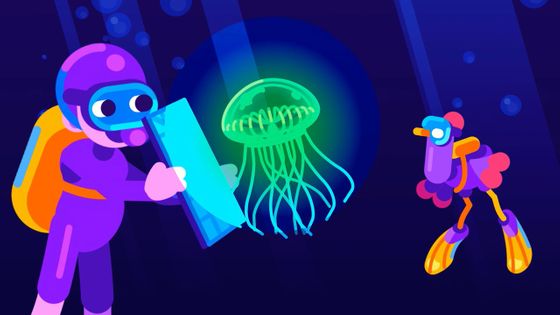
'How many jellyfish would it take to power Tokyo?' 'What would happen if bananas fell instead of rain?' Science YouTube channel
What If It Rains Bananas For A Day? - YouTube
Kurzgesagt apparently receives a variety of questions from viewers, and this time he will be answering 'the most ridiculous and brilliant questions.'

The first question was, 'How many jellyfish would it take to power Tokyo?'
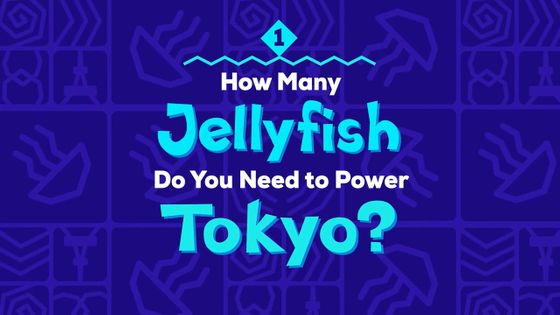
Tokyo is a large city that consumes 280TW (terawatts) of electricity every year.

This is more than the annual electricity consumption of the entire Australia.

Some jellyfish, such as Aequorea victoria , have fluorescent proteins that allow them to glow in the dark. If you place a solar panel in front of these jellyfish, it is possible to extract electricity from the light they emit. However, the amount of electricity that can be obtained from a single Aequorea victoria, which has a maximum diameter of about 20 cm, is only 0.000000001 kWh (kilowatt-hours), which is very small.
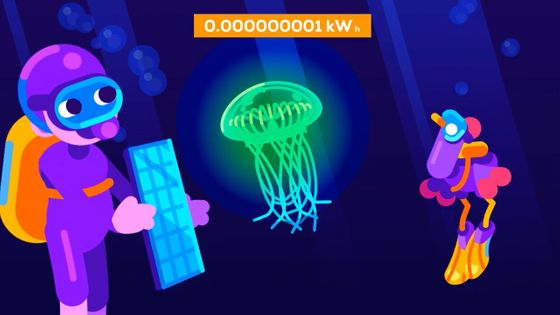
It would take a staggering 1.3
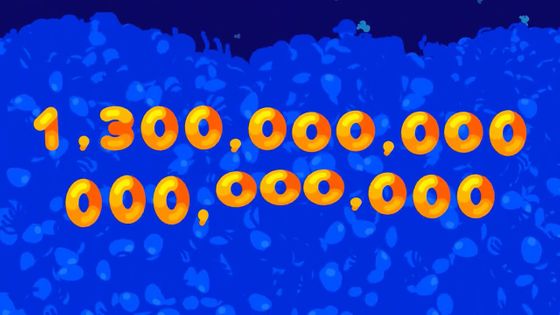
Since it seems unlikely that a tiny Aequorea victoria would be able to supply the electricity needed to power Tokyo, we next considered using a giant jellyfish such as
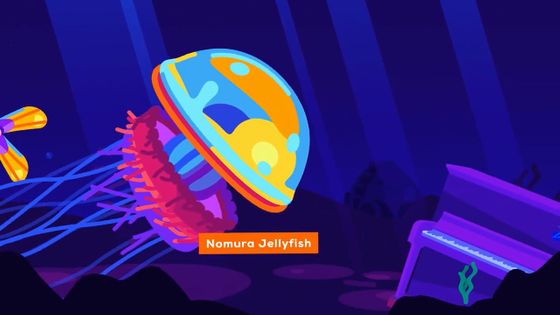
The Nomura's jellyfish has approximately 1,000 tentacles, each up to 4m long, which it uses to catch and eat plankton in the ocean.
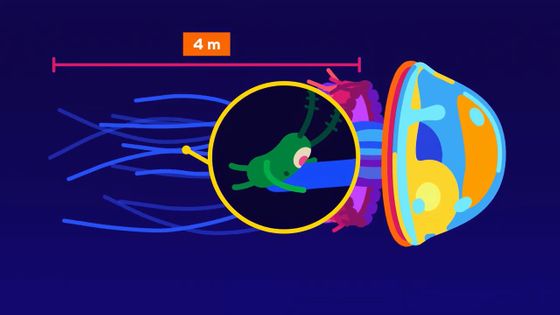
In recent years, there has been a mass outbreak of Nomura's jellyfish in the Sea of Japan and other areas, which has caused damage such as tearing up fishing nets, which has become a problem. If we could catch all of these Nomura's jellyfish in one fell swoop and use the power to generate electricity, it would kill two birds with one stone.
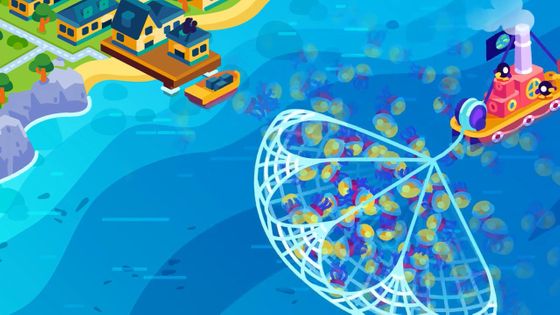
However, the problem is that Nomura's jellyfish do not emit light.

So Kurzgesagt proposes the idea of 'squeezing power out of the Echizen jellyfish using

The piezoelectric effect is a phenomenon in which applying pressure to a crystal or certain ceramics causes the arrangement of ions within the crystal to shift, resulting in one end of the crystal taking on a positive charge and the other end taking on a negative charge, generating a voltage.
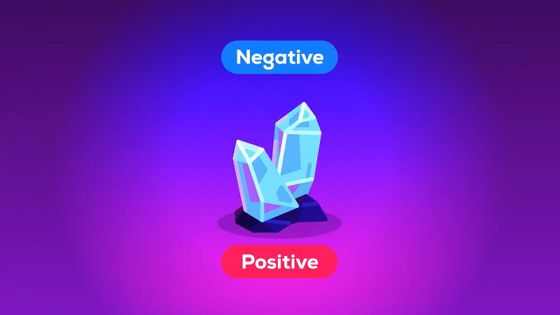
The piezoelectric effect is used to power submarine sonar and in quartz watches.

Kurzgesagt's system involves pushing each jellyfish tentacle into a piezoelectric nylon wetsuit.

Some nylon materials have a crystalline structure and exhibit the same piezoelectric effect as quartz crystal.

The movement of the tentacles bends the tiny nylon fibers, creating a piezoelectric effect that generates electricity.
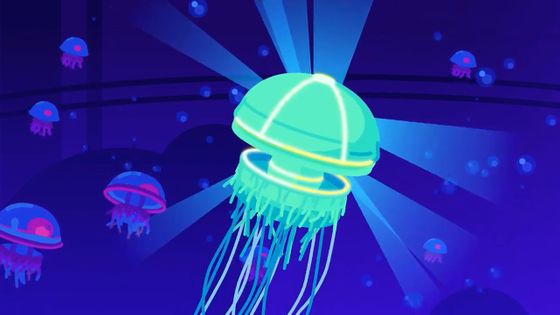
In fact, the amount of electricity that can be extracted from an Echizen jellyfish, which has about 1,000 tentacles, is about 10kWh per year.
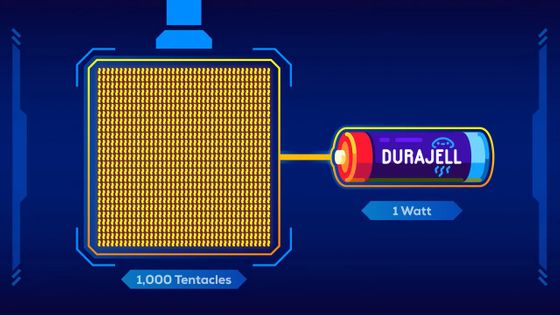
This is enough power to run a laptop for 20 days, but is far from enough to power the entire Tokyo area.

It is estimated that the number of Nomura's jellyfish needed to power the entire Tokyo metropolitan area for a year would be around 29 billion.

Of course, this is a huge number, but considering that the total number of chickens kept on Earth at the time of writing is about 27 billion, it is not impossible if humans are willing to do so.
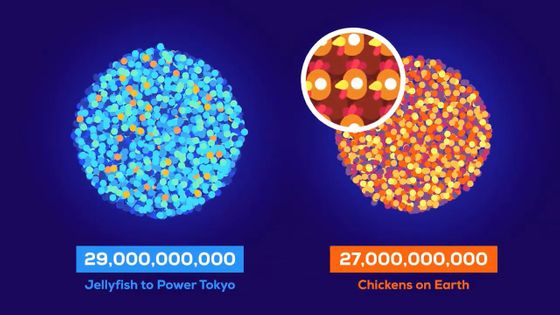
Nomura's jellyfish lay millions of eggs per month, and the larvae that hatch from the eggs can grow to the size of a human in a year if there is enough plankton and an appropriate environment. If we could gather plankton from all over the Pacific Ocean and set up breeding facilities, we could use Nomura's jellyfish to generate electricity for Tokyo.
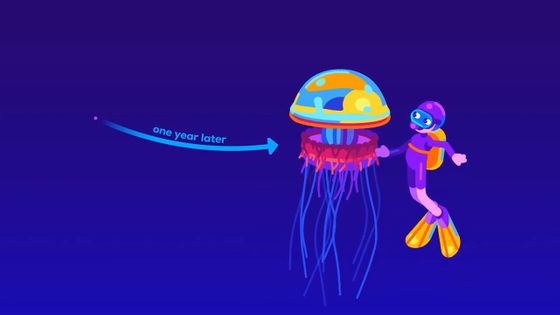
The problem is the space required to keep the Nomura's jellyfish. Considering that the Nomura's jellyfish's tentacles are about 4m long, each one requires an aquarium of at least about 5m square.
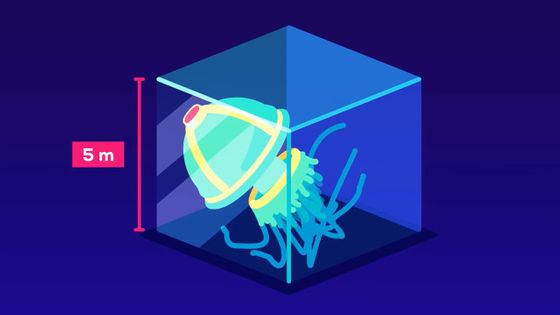
Even if these were stacked together without any gaps, the cube housing 29 billion Nomura's jellyfish would amount to about seven times the total volume of Mount Fuji.

If all 29 billion of these cables and individual tentacles could be properly insulated to prevent short circuits, a giant Echizen jellyfish power plant could power Tokyo.
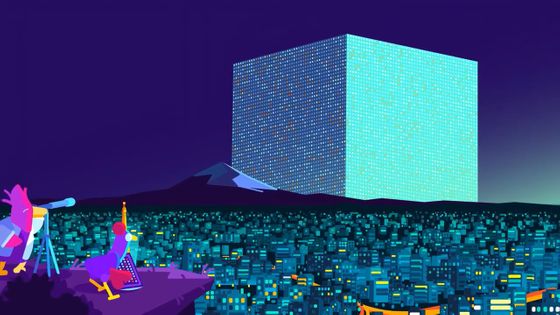
However, considering that Echizen jellyfish die frequently and need to be replaced each time, power generation using Echizen jellyfish is unrealistic. Considering the damage to the ecosystem caused by collecting large amounts of plankton, Kurzgesagt pointed out that power generation using Echizen jellyfish is 'like spending $1 million to buy a $1 bill.'

The second question was, 'What would happen if it rained bananas for an entire day?'

First, Kurzgesagt considered what would happen if every raindrop that fell in a day was replaced by a banana.

During storms, millions of raindrops can fall per square meter.
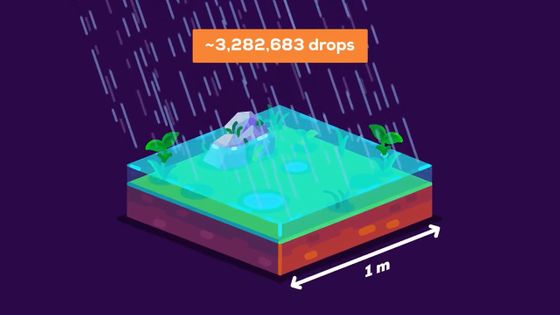
In this case, the banana would cause an impact on Earth equivalent to an asteroid impact, and all life would be wiped out.

However, this is too simple, so let's consider the mass of the 'average amount of rain that falls on the Earth in a day' as a banana. The total amount of rain that falls on the Earth in a day is about 1.33 trillion tons, and if it were a sphere, it would have a diameter of about 14 km.
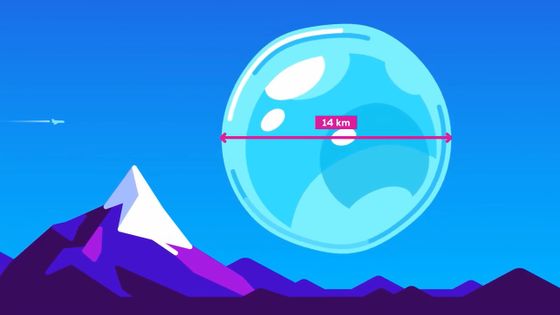
If we assume that one banana weighs about 120g, then the total number of bananas that fall on Earth each day is 11 quadrillion. The total weight remains the same at 1.33 trillion tons.
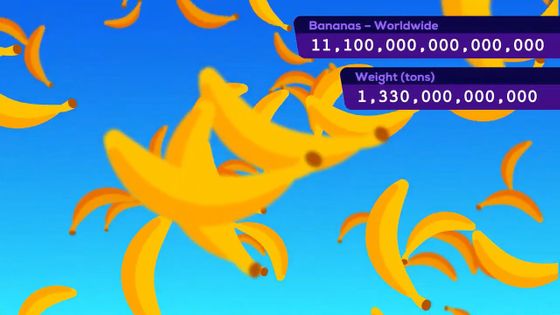
Based on the Earth's average rainfall patterns, even the Sahara Desert would receive around 15 trillion bananas.
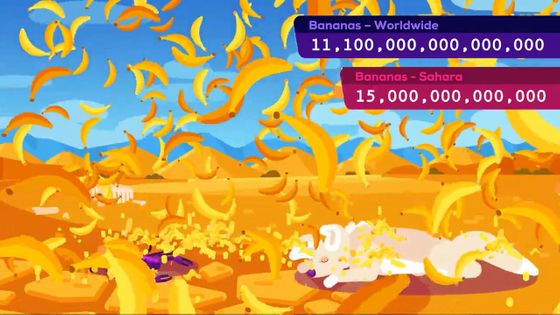
If we calculate that one banana contains about 105 kcal, then the 15 trillion bananas that fell in the Sahara Desert alone would be enough to feed the entire world's population for more than two months, solving the food problem in one fell swoop.

The total amount of calories in bananas falling all over the world is approximately 1.2 trillion kcal.
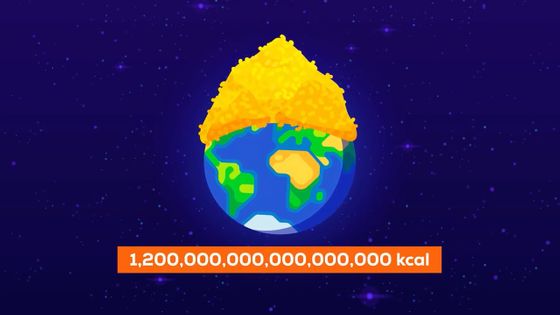
If just one day of rain were replaced with bananas, it would be enough to feed everyone on Earth for over 100 years.

However, realistically speaking, banana rain would have a devastating effect.

If a banana falls from a height of about 3000m, the same as a typical rain cloud, it will reach a speed of 240km/h by the time it hits the ground.

The kinetic energy of a banana falling from the height of a rain cloud is equivalent to that of a bowling ball falling from a 50m building. Anyone hit directly by a falling banana would be mortal.

If we imagine that 11 quadrillion bananas were to rain down across the entire planet, it would cause enormous damage in countries all over the world.

One of the hardest hit cities is London, England, where rains are heavy, with up to 21 billion bananas falling on the city, shattering roofs and windows of buildings.
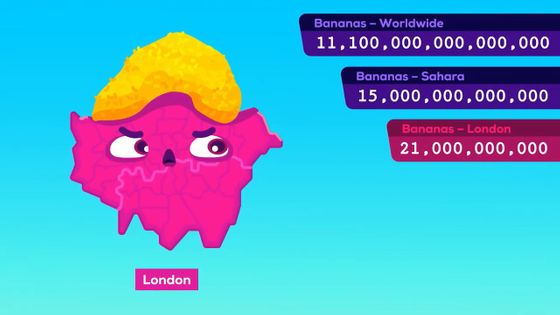
To survive, people need to take refuge underground or in a sturdy building.

Banana rain causes severe damage to cities, infrastructure, rivers and rainforests around the world, and the bananas quickly begin to rot.
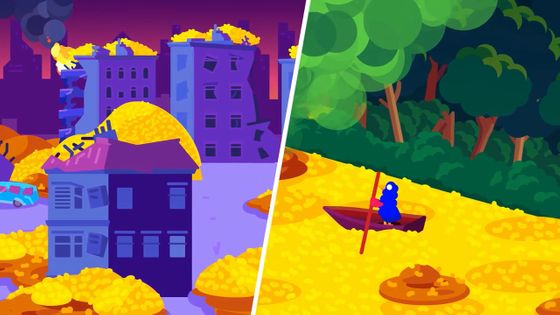
The rotten bananas would drift out to sea and clog coastlines, causing more damage simultaneously around the world than the worst oil spill and major storm combined.
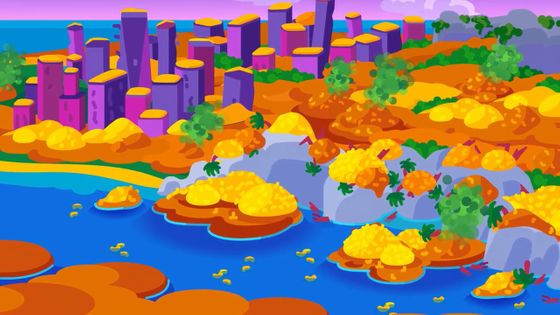
The amount of
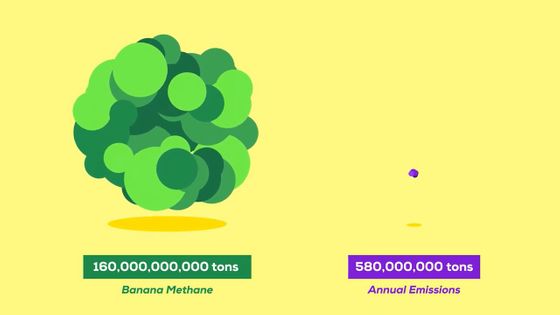
It is predicted that most ecosystems would not be able to cope with the sudden warming caused by methane, and a catastrophic mass extinction would occur.
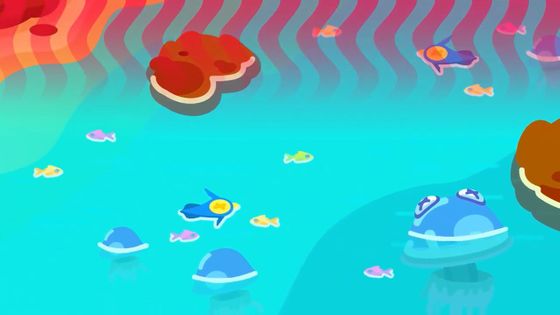
Kurzgesagt summed it up by saying, 'In a nutshell, banana rain is an apocalyptic catastrophe.'
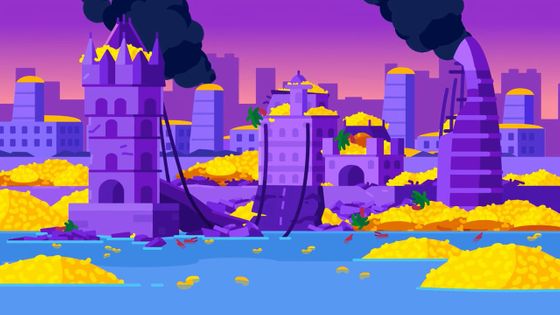
Related Posts:







